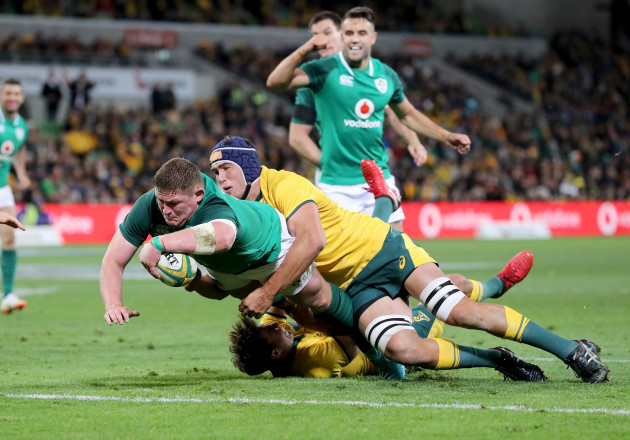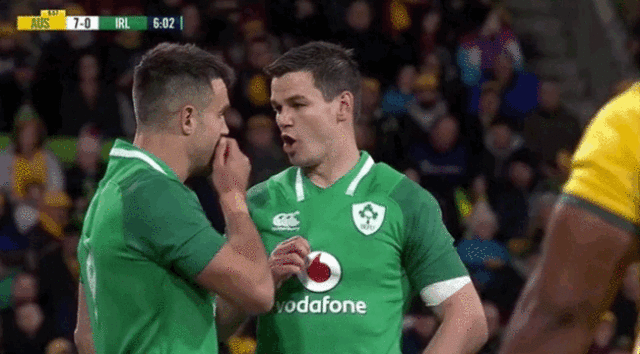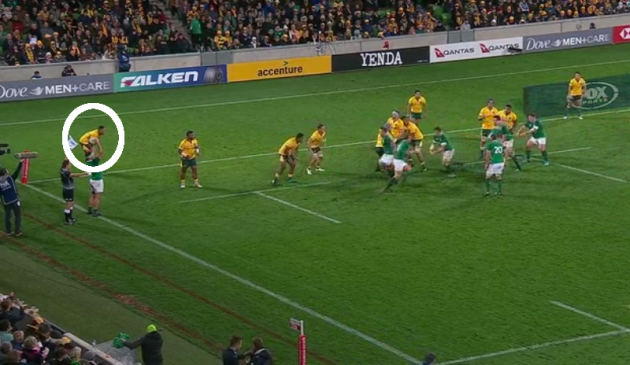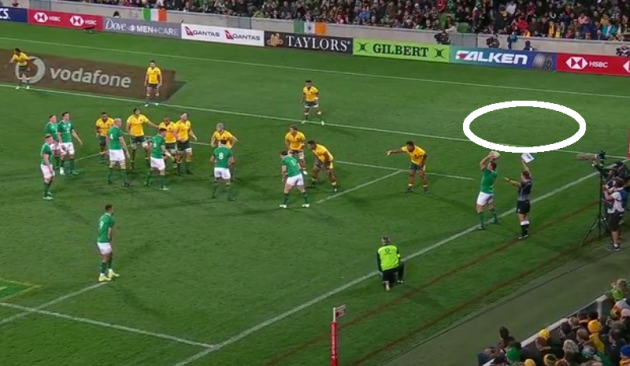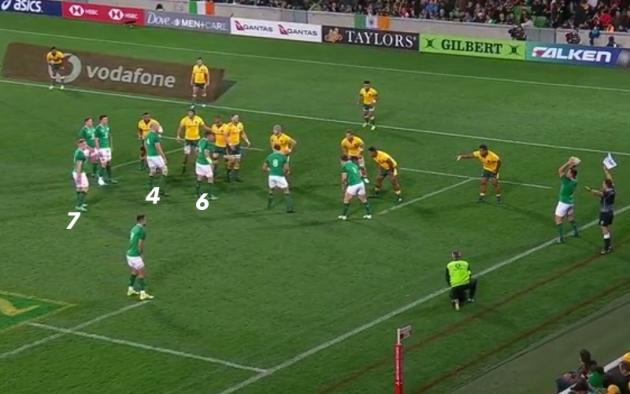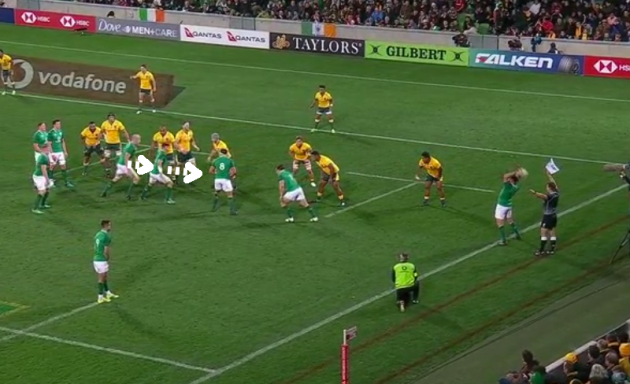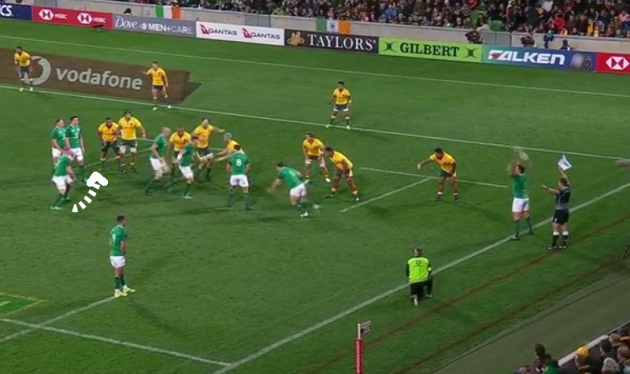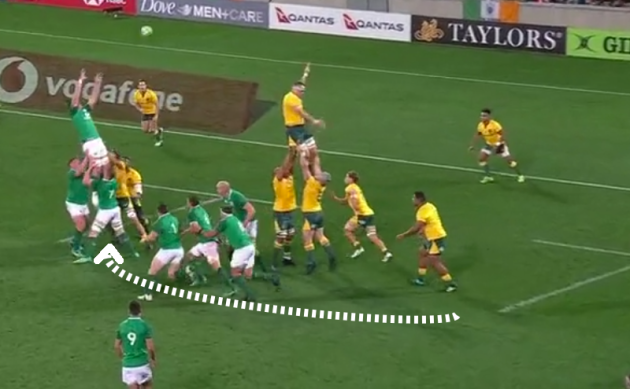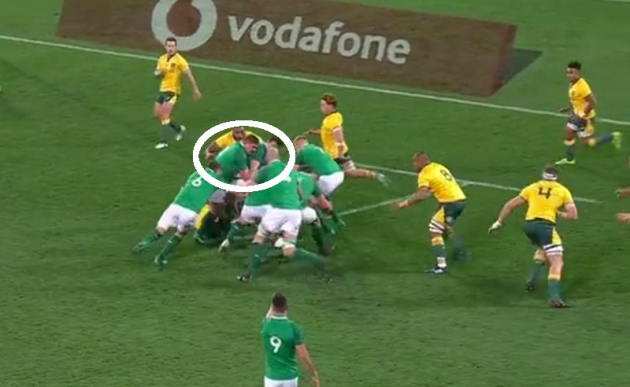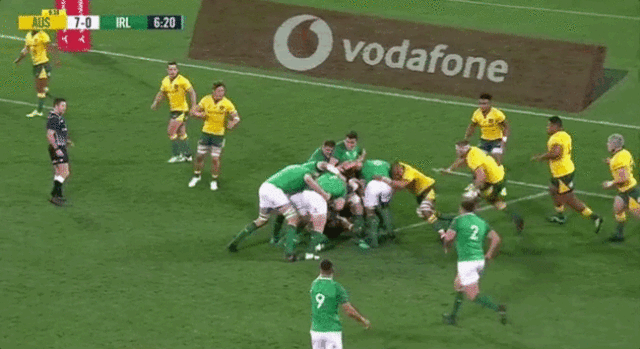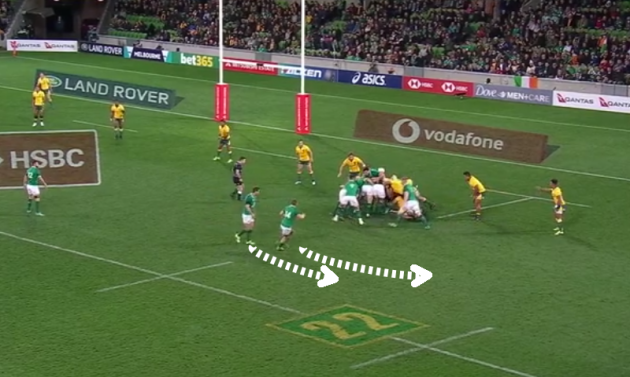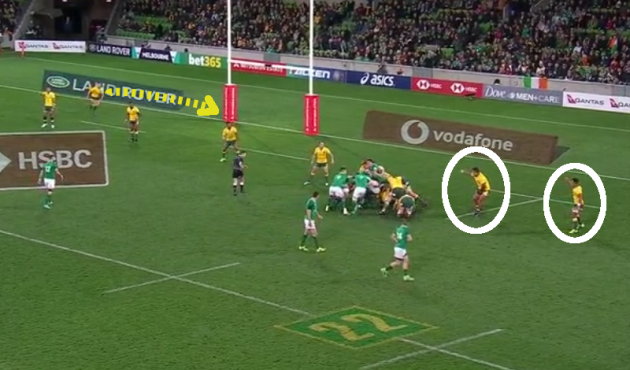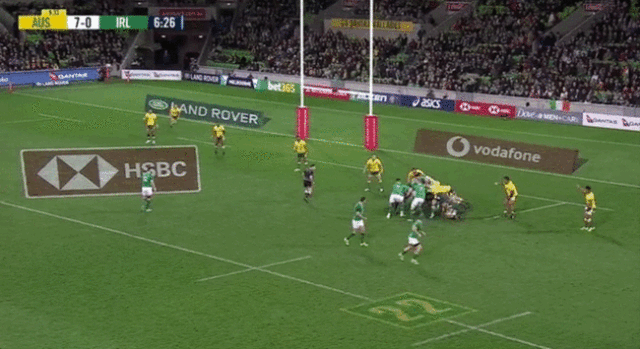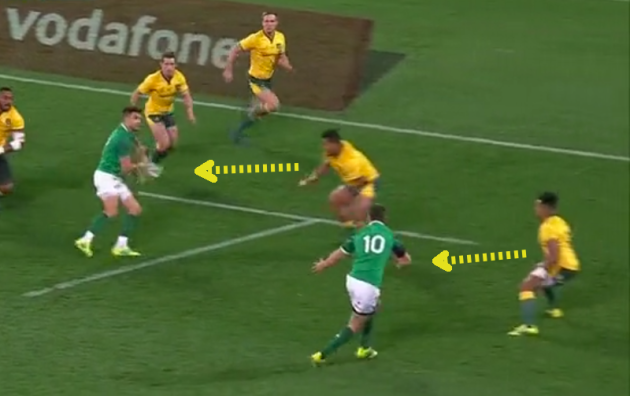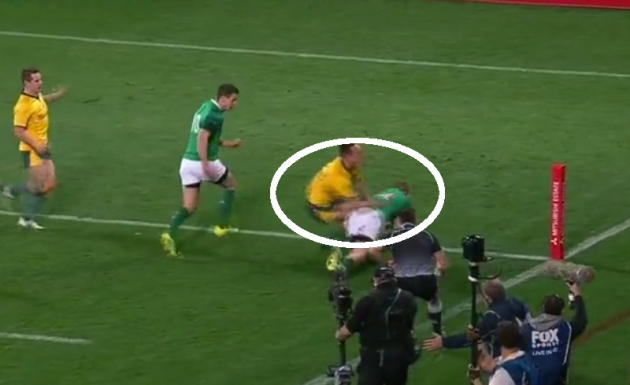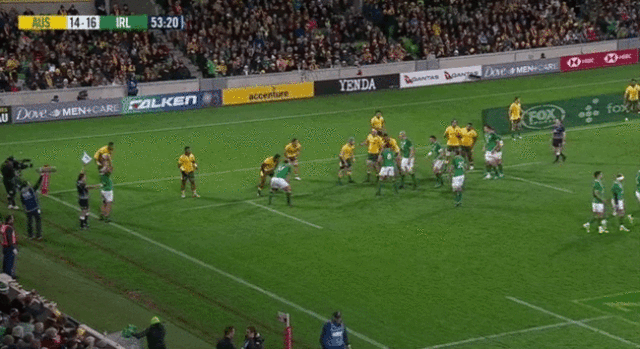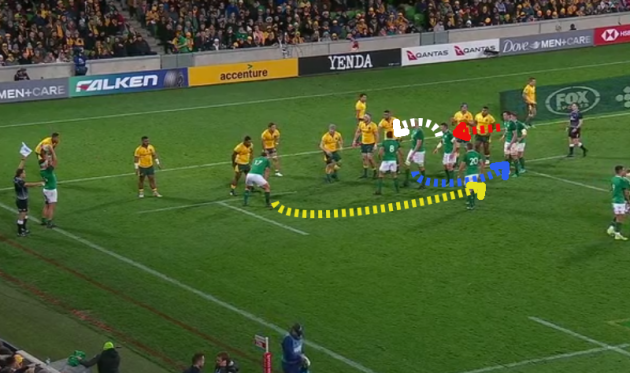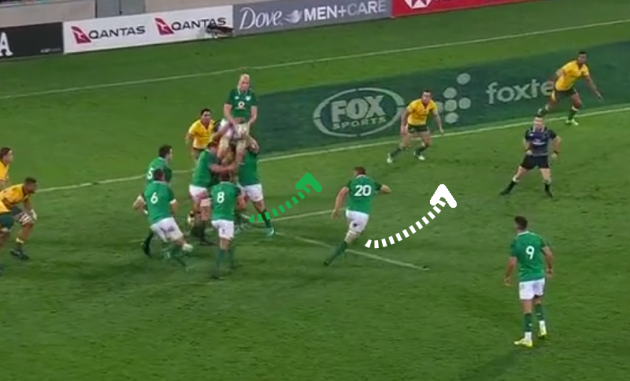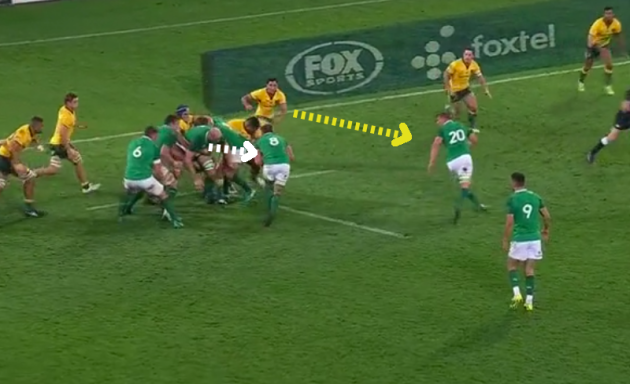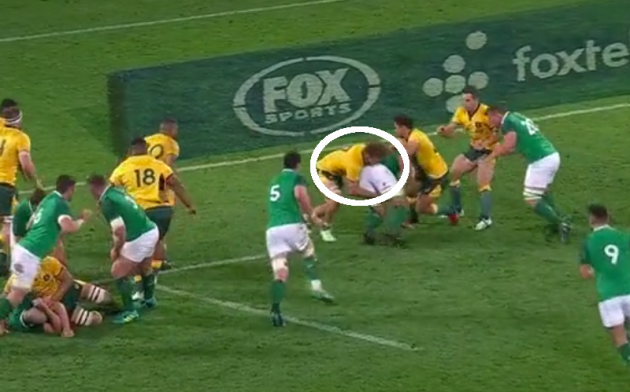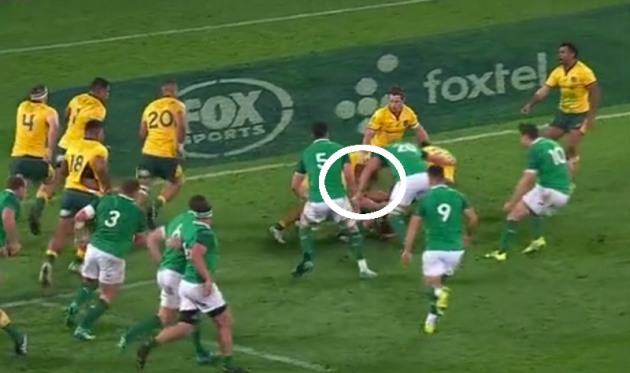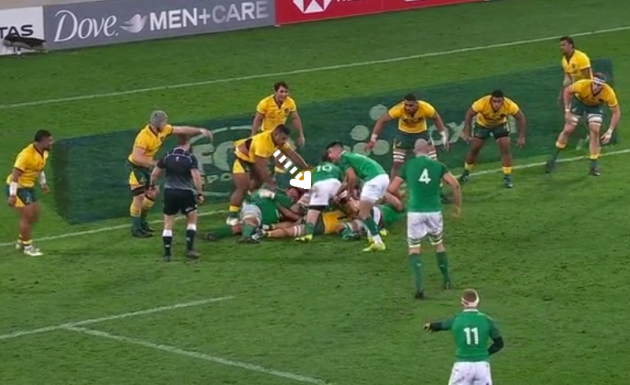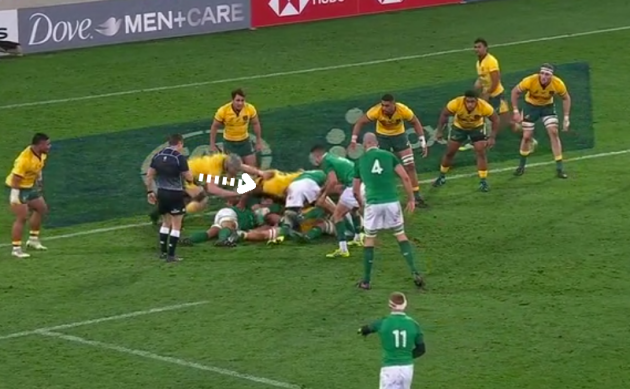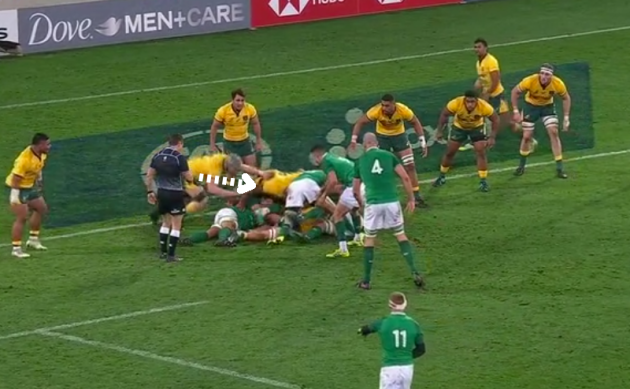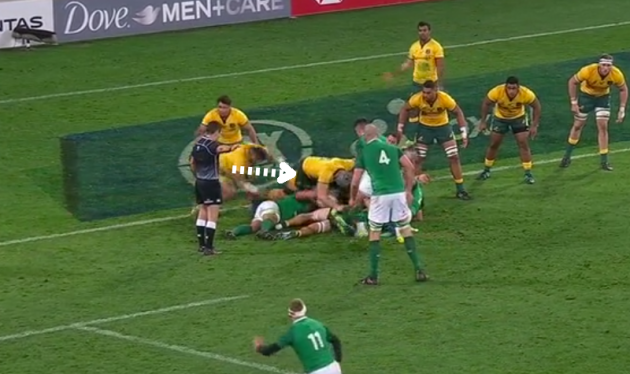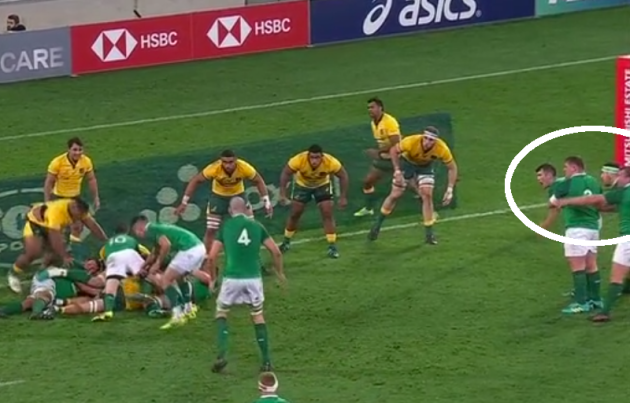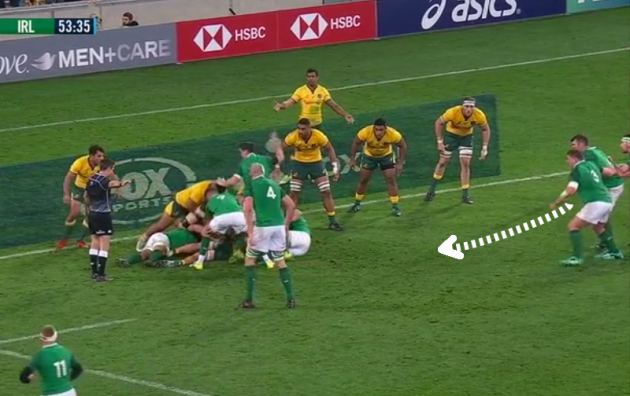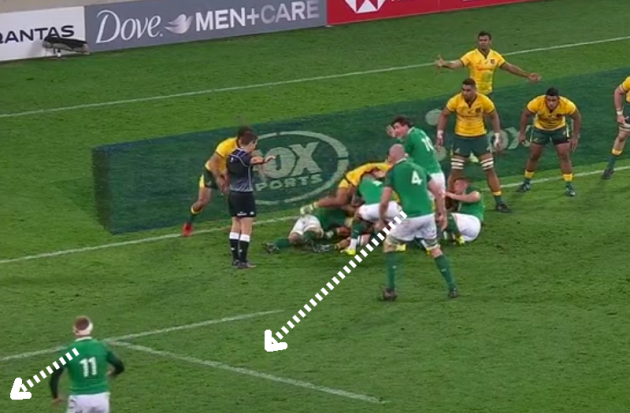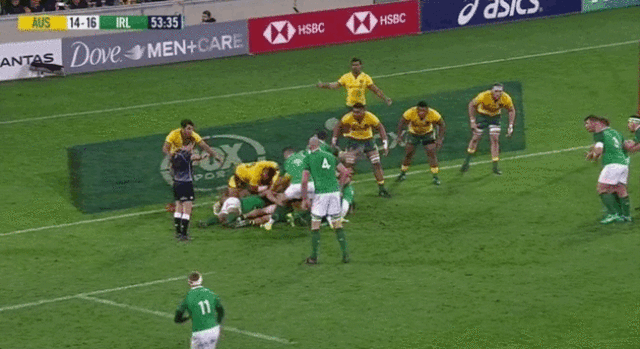JOE SCHMIDT’S IRELAND have a reputation as being a little robotic and slow to react to changing pictures in front of them, but their two tries in Melbourne last weekend demonstrated an ability to adapt.
The first came with the Wallabies down to 14 players after Marika Koroibete’s yellow card.
We so often talk about a ‘numerical advantage’ during sin-bin windows but sometimes teams can struggle to actually take advantage of the extra player they have on the pitch.
Ireland punished the Wallabies to the sum of 13 points during Koroibete’s 10 minutes in the bin, crucial in deciding the outcome of the second Test, and a try for Andrew Conway almost immediately after the yellow card was crucial.
We can be sure that Ireland have prepared and trained for playing against 14 men, and it’s also certain that they considered what they would do if the Wallabies lost a player – that’s standard for Schmidt’s Ireland and most professional teams.
But to be so clinical and intelligent in how they adapted was impressive.
Johnny Sexton kicks the penalty for Koroibete’s dangerous tackle to within 10 metres of the Wallabies’ tryline down the right, and we see a meeting of minds between himself and Conor Murray, with Conway consulted here.
Click here if you cannot view the clip above
Sexton, as the team’s tactical leader, is calling the shots here.
It’s very likely that more than one option is discussed – ‘if the Wallabies do this, we’ll do this, but if they react that way, we’ll go for this area’ – but the chance to come back down the shortside off a driven lineout is certainly the primary thought.
Why does it make sense to target that area?
Well, the Wallabies are obviously down one back and that changes how they position their players defensively, but particularly in this zone of the pitch.
Below, we see Israel Folau positioned in the five-metre channel when the Wallabies have all 15 players on the pitch.
When they have 15 players on the pitch, Koroibete defends out on the open side of the backline defence.
But with Koroibete off the field, the Wallabies take Folau out of the five-metre channel and reposition him in Korioibete’s usual role out on the open side.
So, as Ireland line up to attack from the lineout, we can see that the space Folau usually fills is empty.
Having studied the Wallabies in-depth and considered what they will do if the Wallabies lose a player to the sin bin or a red card, Ireland are aware that there is a good chance this space will be available.
If Folau had stayed put, then Ireland would obviously have had space to attack wide on the left – what they do so well here is read the picture and adapt to it.
If they’re going to exploit that space, then a throw to the tail of the lineout is sensible, dragging the Wallabies further away from that space.
This is Niall Scannell’s first throw of the game in what is the biggest start of his Test career so far, but they back him to deliver.
As we can see below, Ireland form a ’6+1′ lineout, with six players in the actual lineout and Dan Leavy [7] standing in the ‘receiver’ position two metres off the lineout.
The movement of Devin Toner [4] and Peter O’Mahony [6] is going to be key for Ireland in opening the space to throw to the tail of the lineout.
Defensively, Caleb Timu [circled below] is the key player for the Wallabies.
As things stand above, Timu can turn forward and lift Izack Rodda in front of him, or turn backwards and lift Adam Coleman behind him.
If Ireland can drag Timu forward, that obviously means he won’t be in a position to lift Coleman at the tail.
So, Toner and O’Mahony shift forward in the lineout just before Scannell throws.
That successfully draws Timu forward and away from Coleman.
Leavy is a key piece in the jigsaw too.
Just as the ball leaves Scannell’s hands, Leavy moves forward into the lineout to lift James Ryan at the front.
Leavy has to time this perfectly – if he moves before the ball has left Scannell’s hands, Ireland will concede a free-kick – but it leaves Ireland with a three-on-two.
Coleman has a rear lifter in Sekope Kepu, but Timu has been drawn away so he has no front lifter.
Ireland’s Ryan, meanwhile, has Leavy arriving to lift him at the front, while Tadhg Furlong is behind him.
The throw, of course, is vital and Scannell delivers with a beauty.
Click here if you cannot view the clip above
Scannell gets the perfect height on his throw, clearing the hands of the jumping Rodda, while hitting Ryan at the apex of his jump.
There is also enough power in the throw to ensure Ryan isn’t hanging around in the air waiting for the ball and Ireland can immediately transfer into their maul.
Cian Healy comes all the way from the front of the lineout to accept the first transfer from Ryan.
Coleman attempts to sack Ryan – i.e. drag him to the ground immediately before the maul forms – but Furlong does a fine job of bracing in behind Ryan, wrapping him up tight to provide extra stability.
Over on the other side of the forming maul, Leavy and Stander provide a solid buffer against the initial counter-drive from Timu.
With Rodda having jumped, the rest of the Wallabies pack is delayed getting to the maul and Ireland are able to settle themselves into a tight, cohesive unit as Healy transfers the ball to the arriving Scannell to steer the maul from the back.
Ireland begin to edge forward and infield, accentuating the opportunity on the right.
Click here if you cannot view the clip above
As the maul works forward and infield, we can see above that Sexton and Conway are also making their move back across to the shortside, having initially set up on the openside.
The two defenders on that side, hooker Brandon Paenga-Amosa and Will Genia, would usually have Folau on their outside and probably feel comfortable even with that movement from Conway and Sexton.
But Folau isn’t there, as we know, and Paenga-Amose and Genia [white below] immediately begin to shout and motion for support.
The player to react is Dane Haylett-Petty [yellow] but he is coming all the way from the other edge of the defence and has a long distance to cover.
Ireland get a penalty advantage at this point as Kepu looks to collapse the maul – which stays up – and in that exact moment, they strike right.
Sexton and Conway versus Paenga-Amose and Genia is obviously a two-on-two, so Murray is key here in making it a numbers-up situation.
Click here if you cannot view the clip above
The scrum-half takes the ball from Scannell and arcs away to the right.
Bernard Foley reacts and tries to get around from the other side of the maul but he’s going to be too late.
Murray does superbly here, first throwing a dummy pass to see if Paenga-Amosa will drift off him, allowing the scrum-half to drive for the tryline himself.
But Paenga-Amosa opts to bite in on him for the tackle as Genia lines himself up on Sexton.
Conway is the spare attacking player and Murray skillfully finds him with a bridge pass, arcing the ball over Genia’s head and out to Conway.
“If it was advantage, I didn’t know about it,” said Murray afterwards.
“Johnny went blind and distracted the defenders and I forgot Andrew isn’t as tall as Jacob [Stockdale], but the little fella got up and dotted it down!”
Unfortunately for Conway, he was injured by the late-arriving Haylett-Petty in the process of scoring and had to be replaced in the 15th minute.
Haylett-Petty does not have a history as a dirty player but we have seen a couple of injuries caused by knees from defenders in these attempts to prevent tries – Fergus McFadden’s season was ended in similar fashion – and it’s certainly something for referees to keep a close eye on.
That said, it’s happening on the other side of the coin too, with supporting players hammering into defenders on the tryline, as was the case with O’Mahony slamming into the exposed Foley just after Keith Earls had attempted to ground a try in the second half.
Regardless, Ireland take advantage of their numerical advantage wonderfully in this situation, leaning on their diligent analysis work, nailing their set-piece and then adapting well to the picture presented to them.
Schmidt’s men did something similar for their other score in this game, finished by Furlong.
Again, it’s a close-range lineout and the movement from Ireland to win the ball at the tail – this time from Rob Herring’s excellent throw – is sharp.
Click here if you cannot view the clip above
It’s a 6+1 from Ireland again, and what we get this time is Ryan setting up to jump at the tail initially, before shifting forward [red below] as if to lift O’Mahony [white] from the rear.
Meanwhile, Toner [blue] moves to the tail to jump there and Jack McGrath [yellow] comes all the way from the front of the initial formation to lift Toner at the front.
The movement is too much for the Wallabies again, as they jump in the middle through Rodda, and Toner wins clean possession from Herring’s accurate throw, with Furlong and McGrath delivering another strong lift.
As Toner is coming back to ground, Jordi Murphy [white below] is moving from the receiver position and out across the 15-metre line.
At the same time, Stander [green] is arcing around to the back of the lineout, having initially given some dummy movement in the middle of the lineout to further attract the Wallabies there.
As Toner pops the ball off to Stander [white below], Ireland are hopeful that replacement Wallabies scrum-half Nick Phipps is going to be attracted to Murphy [as indicated by yellow].
But Phipps reacts well and tackles Stander on his inside shoulder.
Michael Hooper arrives in as the tackle assist…
… and after Stander is brought to ground, Hooper instantly looks to get his hands on the ball for a turnover.
It’s difficult to judge with 100% accuracy from this angle but it appears that Hooper doesn’t clearly release from the tackle before going at the ball in this instance.
Hooper gets his hands towards the ball just as Murphy hammers into him and shifts him backwards.
In almost the same moment, Stander is attempting to roll on the ground to buy his supporting team-mates time and the ball gets trapped in between all three of Hooper, Murphy and Stander.
To the right of the contact, Kurtley Beale seems to believe that Hooper has won the turnover and appeals for a decision.
Stander is fighting hard for the ball on the ground but the Wallabies appear to feel they have turned it over.
Conor Murray is appealing for a penalty for Hooper not rolling away, but the nearest Wallabies player on his feet – Taniela Tupou – also seems to believe it’s now Wallabies ball.
He decides to drive into the ruck and try to copperfasten the turnover by clearing away Johnny Sexton, who has arrived in on the Irish side.
David Pocock, just to the right of the ruck, also floods in behind Tupou.
Pocock is a player who simply doesn’t make poor decisions in situations like this, meaning the only sensible explanation is that he too believes Hooper has been successful with his poach.
But in the same split-second as Pocock is committing into the ruck, referee Paul Williams lifts his right arm to indicate an advantage to Ireland, presumably viewing Hooper as not having rolled away from the tackle on Stander.
In the split-second where Williams follows that up by saying “advantage,” we can see below that Wallabies replacement hooker Tolu Latu has also committed into the ruck.
While all of the above has been happening after Stander’s carry, Ireland have also been setting up for the next phase of their attack.
Herring [16 below], O’Mahony [6] and Furlong [3] all work around the corner to ready themselves for a carry on the next phase.
McGrath [17] also shifts to join them after initially moving towards the first ruck, leaving Ireland with a strong four-man pod waiting on the right.
In the same split-second as hooker Latu commits to the ruck and Williams says “advantage,” Furlong reads the opportunity wonderfully.
He immediately begins to move back to the left of the ruck, responding to the picture that has been presented – all of the Wallabies fringe defenders on that side having committed to the ruck.
With Toner also available to carry to the left side of Ireland’s ruck, Phipps simultaneously realises that it’s not a good picture for him.
He screams at Latu to disengage from the ruck and get to this feet to defend: “Tolu, Tolu, out, Tolu!”
Also responding well for Ireland are Toner and Keith Earls, who shift themselves further to the left.
That engages the two defenders outside Phipps, Rob Simmons and Folau, and it leaves Furlong in the dream scenario.
One-on-one with the 87kg opposition scrum-half.
Phipps is a fine defender but it’s certainly advantage Furlong in this battle.
Click here if you cannot view the clip above
To his credit, Phipps dips in low and wraps around Furlong’s right ankle but the Ireland tighthead’s momentum takes him close enough to allow him to stretch out skillfully with his left arm and touch down.
The pass from Murray, out the back of his right hand, is superbly-executed too, although he knows he simply had to deliver the ball to Furlong.
“He was just roaring so loudly I felt I had to get it to him,” said Murray post-match.
“You don’t want to annoy Tadhg Furlong when he wants the ball!”
The42 is on Instagram! Tap the button below on your phone to follow us!
